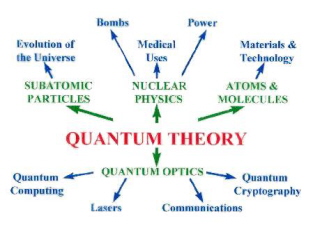
Guide Index
What is Quantum Mechanics?
Discovery (A single interface to search all required material)
Media Centre (Find the electronic broadcasts made by credible tv channels of the world including PTV, CNBC, CNN, BBC and more).
Library Help (In this subject guide whenever you need to ask any query, click to ''Library help'' link and submit your query, Information services department will definitely answer your query).
Google Search
Feed back
Important Links
Course Outline (PHY-305) (PHY-411)
Text books (those books which teachers recommend to students for this subject)
Reference books (those books which teachers recommend to students for this subject).
Related books (books available in library about nanotechnology and nano sciences & technology).
E-books Full text (ISD search these E-books according to subject).
Google Scholar
Google books
E-Resources
Online Databases
Articles
Research papers
Share
Blogs & Societies
Blog (a regularly updated website or web page, typically one run by an individual or small group, that is written in an informal or conversational style).
Societies (an organization or club formed for a particular purpose or activity)
Related Guides
Note: In this guide Information Services Department provide their students authentic, valid information resources for their study, research, class assignments and most importantly their individual convenience. We will welcome your precious suggestions and feedback
Quantum mechanics (QM; also known as quantum physics or quantum theory), including quantum field theory, is a branch of physics which is the fundamental theory of nature at the small scales and energy levels of atoms and subatomic particles.
Classical physics (the physics existing before quantum mechanics) derives from quantum mechanics as an approximation valid only at large (macroscopic scales. Quantum mechanics differs from classical physics in that: energy, momentum and other quantities are often restricted to discrete values (quantization), objects have characteristics of both particles and waves (i.e. wave-particle duality), and there are limits to the precision with which quantities can be known (uncertainty principle).
Quantum mechanics gradually arose from Max Planck's solution in 1900 to the black-body radiation problem, and Albert Einstein's 1905 paper which offered a quantum-based theory to explain the photoelectric effect. Early quantum theory was profoundly re-conceived in the mid-1920s by Erwin Schrodinger, Werner Heisenberg, Max Born and others. The modern theory is formulated in various specially developed mathematical formalisms. In one of them, a mathematical function, the wave function, provides information about the probability amplitude of position, momentum, and other physical properties of a particle.
Important applications of quantum theory include quantum chemistry, superconducting magnets, light-emitting diodes, and the laser, the transistor and semiconductors such as the microprocessor, medical and research imaging such as magnetic resonance imaging and electron microscopy. Explanations for many biological and physical phenomena are rooted in the nature of the chemical bond, most notably the macro-molecule DNA.



Graduate